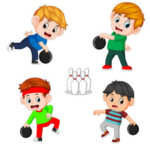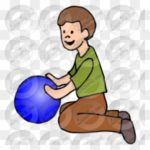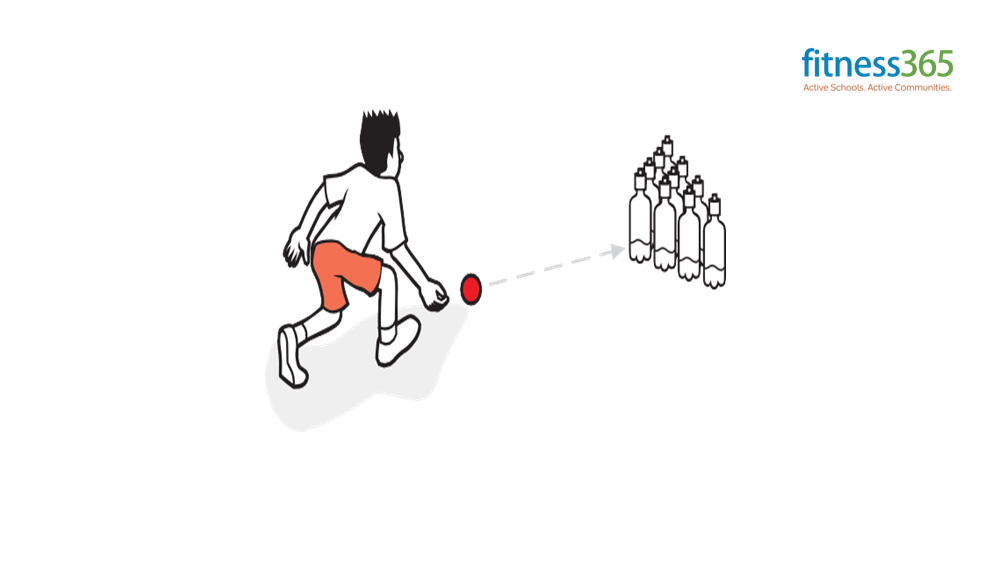
by Neetu | Jun 4, 2020 | Fitness Activity
Movement skills/concepts
Rolling a ball to a stationary target, accuracy.
Set-up
- Sets of 10 skittles (milk containers filled with sand, drink cans) and small balls. Skittles are arranged in the ten pin formation on a smooth hard surface.
- Each pair or group of four has a set of skittles and a ball.
Activity
- One player rolls at the skittles, another replaces them as they are knocked over and calls the score.
- Change roles after each turn.
Can you see …?
- eyes on target
- stepping in to roll
- low release
- following through
You could ask …
Where did you aim when all the targets were standing?
Did you vary the speed of your roll to knock down the targets?
Variations
Vary number: Decrease or increase the number of skittles.
Vary distance: Decrease or increase the distance of the skittles from the player.
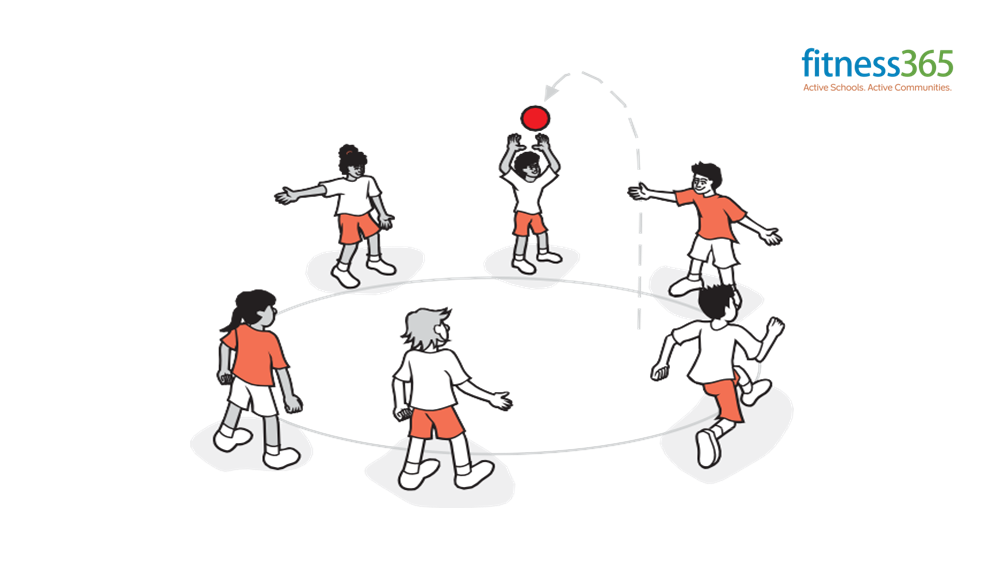
by Neetu | Jun 4, 2020 | Fitness Activity
Movement skills/concepts
Catching a ball approaching at different levels, angles, and at different speeds, passing, and throwing.
Set-up
- A variety of small and large balls.
- Each group of six-seven, with one ball, stands in a circle in the grass or hard area.
Activity 1: Throw and catch
The player with the ball throws it to anyone in the circle other than an adjacent player. The thrower then runs around the circle to the catcher’s position while the catcher throws and runs.
Activity 2: Catchers against runners
The child with the ball throws it to one of the adjacent players, then runs around the circle back to their place. The remaining players pass the ball around the circle to see how many catches they can make before the runner gets back. If the first pass is dropped, the runner starts again.
Activity 3: Your ball
The thrower with the ball stands in the middle of the circle and throws the ball high, calling a player’s name. That player moves into the circle and the thrower takes up the player’s position outside the circle. The named player catches the ball, then throws it up while naming another player to catch. Continue.
Can you see …?
- eyes on the ball
- catch with soft fingers
- fingers pointing up for a ball above the waist, pointing down to catch a ball below the waist
- getting under the ball to catch it
You could ask …
How will you have your hands to catch a high ball?
Sometimes the ball pops out of our hands. How can you keep the ball in your hands? Where should you position your body to receive a catch?
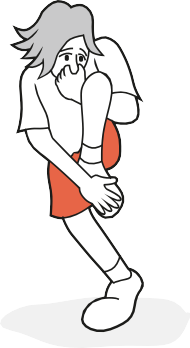
by Santosh | Jun 4, 2020 | Fitness Activity
Movement skills/concepts
Running, dodging, balancing and relationships (with others).
Set-up
Groups of approximately 10, with two or three taggers (holding up one arm for identification) per group, are spread out in a grass or hard surface area.

Activity
The taggers attempt to tag other children. Other children are immune from being tagged if they are holding the toes of their left foot with their right hand, while the left hand, after passing under the left knee, holds their nose (or reversing roles for left and right hands).
Can you see …?
You could ask …
Runners: When will you decide to balance or to evade the taggers? How will you maintain your balance?
Variations
Vary skill: Focus on a locomotor skill and balance, (e.g. hopping and stork balance).
COOL DOWN/ CLOSURE
Review Skill/Activity, stretching, and questions.

by Santosh | Jun 4, 2020 | Fitness Activity
Movement skills/concepts
Running, jumping, dodging, balancing, landing and space awareness.
Set-up
Children are scattered in the general space (islanders), one or two are ‘sharks’, with their arms raised for identification.
Hoops or mats ‘Islands’ scattered around the playing area – there are fewer islands than islanders.
Activity
Sharks inhabit the space between the hoops or mats and attempt to tag any player who is not on an island. Only one player per island is allowed.
A player without an island may jump to an inhabited island, whereupon the occupier must run to find another island.
If tagged, that player becomes a shark.
Can you see …?
- head up, looking around
- landing in personal space
You could ask …
Sharks: How will you work together to tag the others? Islanders: When will you jump and land on an island?
Variations
Vary locomotor and balance activity: For example, hop between islands and scale balance on the island.
COOL DOWN/ CLOSURE
Review Skill/Activity, stretching, and questions.
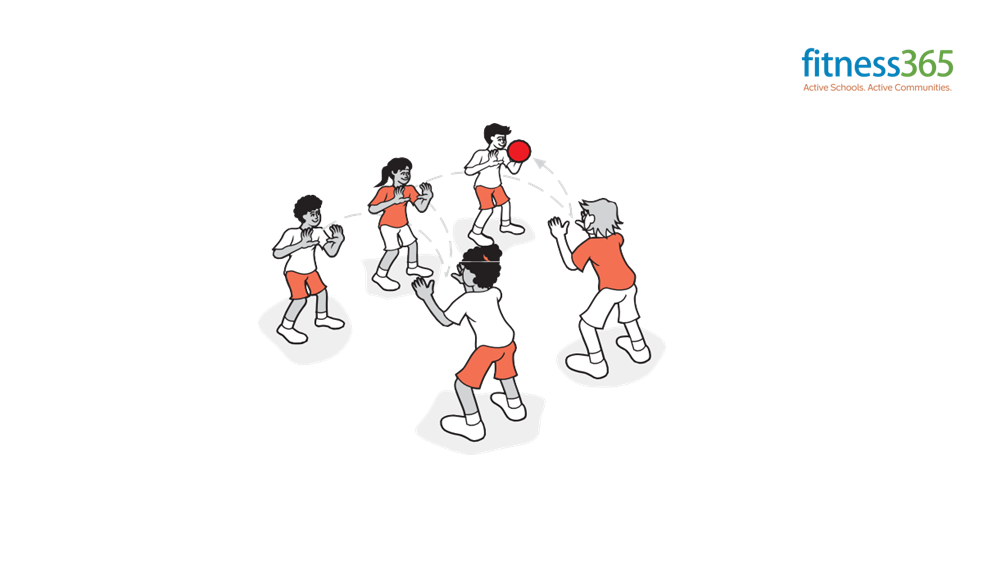
by Neetu | Jun 4, 2020 | Fitness Activity
Movement skills/concepts
Two-handed pass to a stationary target, space awareness (pathways and patterns), and relationships (with others).
Set-up
- Large balls.
- Grass or hard area.
- Groups of five–six.
Activity 1: Circles
In a circle of five–six with two balls
- throw/pass a ball around the circle, then reverse the direction on a signal
- throw/pass two balls in the same direction – play Dog and Rabbit: can one ball catch the other?
- throw/pass to anyone – one ball than two balls
- throw/pass to every second person
- face outwards and pass back overhead
- pass to anyone except an adjacent player. How many passes can you make in 30 seconds?
- surround a leader in the center, who throws/passes to each player in turn, to anyone, passes a ball out as the other is passed in (In and Out)
Activity 2: Zigzag
Groups of five or six in two lines facing each other.
- pass a ball and zigzag up and down
- pass it up one line and pass it down the other line
- pass one ball, then, when it reaches the end, pass the next, then the next, etc
- pass one ball, then the next, then the next, etc
- pass one ball as many times as possible… seconds
- using two balls, throw to anyone on the other line who doesn’t have a ball
Variations
Vary skill: Use a push pass (soccer, hockey), chest pass, two-handed overhead pass.
Vary equipment: Use different balls, (e.g. rugby ball for a spiral pass).
Vary distance: Increase or decrease the distance required for the pass.
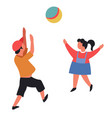
by Neetu | Jun 4, 2020 | Fitness Activity
Movement skills/concepts
Catching a ball rolled or thrown from different angles and levels and at different speeds.
Set-up
- A variety of balls.
- Children in pairs are spread out in a hard flat area.
Activity
- pick up a ball rolled by your partner with two hands/one hand/the other hand
- step across and pick up a ball rolled a little to one side, then on the other side
- catch a ball bounced to you down low/up high
- catch a ball thrown to you down low/up high
- move around, bouncing and catching with your partner
- move around, throwing and catching
- make 5–10 catches without dropping the ball
- catch as many times as possible in 30 seconds
- move further apart and still catch the ball
- throw the ball over a net/goalpost and catch it
Variations
Vary equipment: Try the throwing and catching activities with different types of ball/objects.









